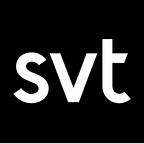GDC 2018
by Johan Löfstrand
A couple of weeks ago three of us from the team that builds the Bolibompa app visited the yearly Game Developer Conference in San Francisco.
It was a week of learning and inspiration together with 26000 other game developers. A lot of people but there were over 500 talks with topics ranging from GPU optimizations to how to write music for games. We felt a striking fact that there are so many experts with truly deep knowledge in their fields. Our team is under 10 people and that means that each of us have to cover a broader competence area. In that sense we are more like Indie developers.
Besides lectures, there’s an exhibition area with a big area showcasing different games, countries marketing their ambitions for the gaming industry, indie titles (there is really a huge and growing indie market), and so forth.
So how could we apply all of this in a Bolibompa context?
Here are a some of our takeaways and thoughts of how it could be useful for us.
Unity, the company behind the game engine we’re using talked about some interesting news:
- The ability to use managed multithreading with a new job system. That’s interesting, but for us that might never be needed and we also have to consider that such a job system brings more complexity to our code. But let’s say we wanted a nice looking lake for our dragon to take a bath — the technical implications for that could be that we need a mesh were the different vertices in that mesh are moved around for simulating waves. That might be a real performance killer and the new job system could then be useful.
- Shader editor. A tool that helps building new shaders (graphic specific code used to determine how things are rendered) from within a GUI by drag and drop of different nodes that gives some effect. That’s more like how it’s down in 3d modeling tools, like Blender.
AI & Machine learning. This is an area that seem to have a little more momentum right now. Tools and support are getting better and one use case example are that you could let the enemies in an adventure game have learning capabilities to adjust the difficulty of the game and get a more dynamic feeling. Perhaps we could use some of the concepts and technology to give our balloon game increasing difficulty?
A good introduction to how machine learning could be applied in different scenarios as well as how Unity does it could be found in this blogpost: introducing-unity-machine-learning-agents.
Music in games is perhaps most noticeable in so called AAA games, the ones that might take years to make, but music is also used in smaller productions due to the fact that it really can boost different emotions in an efficient way. One example of good music in a large production is the Game award winner for best music in 2017, the game Automata.
So far we have no music in our app but let say we were to use it in our tooth brushing mini game. Why not play a short rather joyful tune in the beginning just to give a little positive attitude towards the brushing? But then fast fade it away to give room for the sound effects that are supporting the activity more directly. One lesson learned from the talks was that the music must never be ”too good” — or at least not be dominant. It’s also important to consider when to start playing it, a good idea is to do it based on the players actions.
So after the visit to GDC we feel inspired and filled with new insights and we believe that our users will notice that in our app!
Originally published at blogg.svt.se on April 30, 2018.
